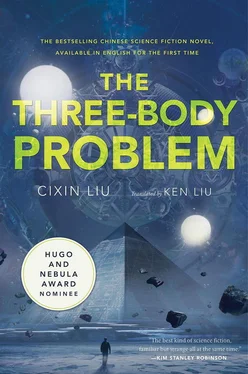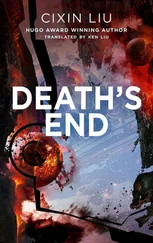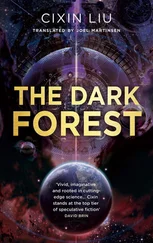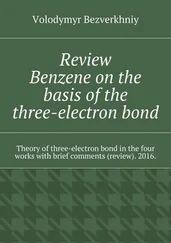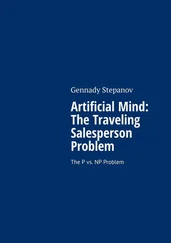They were all eyes! [Of course, we don’t know what Trisolaran eyes look like, but we can be certain that any intelligent life would be very sensitive to representations of eyes.]
The princeps was one of the few who kept calm. He asked the science consul, “How complicated can the internal structure of a subatomic particle be?”
“It depends on the number of dimensions of your observation perspective. From a one-dimensional perspective, it’s only a point—that’s how ordinary people think of the particles. From a two- or three-dimensional perspective, the particle begins to show internal structure. From a four-dimensional perspective, a fundamental particle is an immense world.”
The princeps said, “To use a word like ‘immense’ to describe a subatomic particle such as a proton seems incredible to me.”
The science consul ignored the princeps and continued, “As we move to higher dimensions, the complexity and number of structures within a particle increase dramatically. The comparisons I’m about to make will not be precise, but should give you an idea of the scale. A particle seen from a seven-dimensional perspective has a complexity comparable to our Trisolaran stellar system in three dimensions. From an eight-dimensional perspective, a particle is a vast presence like the Milky Way. When the perspective has been raised to nine dimensions, a fundamental particle’s internal structures and complexity are equal to the whole universe. As for even higher dimensions, our physicists haven’t been able to explore them, so we cannot yet imagine the degree of complexity.”
The princeps pointed to the giant eyes in space. “Do these show that the microcosmos contained within the unfolded proton harbors intelligent life?”
“Our definition of ‘life’ is probably not appropriate for the high-dimensional microcosmos. More accurately, we can only say that universe contains intelligence or wisdom. Scientists have long predicted this possibility. It would have been odd for such a complex and vast world to not have evolved something akin to intelligence.”
“Why have they transformed into eyes to look at us?” The princeps looked up at the eyes in space, beautiful, lifelike sculptures, all of them gazing upon the planet below strangely.
“Maybe they just want to demonstrate their presence.”
“Can they fall down here?”
“Not at all. You may rest easy, Princeps. Even if they were to fall, the mass of all these huge structures added together is only that of a proton. Just like the one-dimensional string from last time, they won’t have any effect on our world. People just have to get used to the strange sight.”
But this time, the science consul was wrong.
People noticed the eyes moved faster than the other solids filling the sky, and they were gathering into one spot. Soon, two eyes met and merged into one bigger eye. More and more eyes joined this big eye, and its volume grew. Finally, all the eyes melded into one. It was so large that it seemed to represent the gaze of the universe upon Trisolaris. The iris was clear and bright, and at the center was the image of a sun. Over the broad surface of the eyeball, various colors cascaded in a flood. Soon, the details over the giant eye faded and gradually disappeared, until it became a pupil-less blind eye. Then it began to deform until it finally lost the shape of an eye and became a perfect circle. When the circle began to slowly rotate, people realized that it was not flat, but parabolic, like a slice cut from a giant sphere.
As the military consul stared at the slowly spinning colossal object in space, he suddenly understood and shouted, “Princeps and others, please go into the underground bunker right away.” He pointed upward. “That is—”
“A parabolic mirror,” the princeps said calmly. “Direct the space defense forces to destroy it. We will stay right here.”
The parabolic mirror focused the sun’s beams onto the surface of Trisolaris. Initially, the spot of light was very large, and the heat at the focal point wasn’t yet lethal. This spot moved across the ground, searching for its target. The mirror discovered the capital, the largest city of Trisolaris, and the light spot began to move toward it. Soon, the beam was over the city.
Those standing under the Pendulum Monument only saw a great brightness in space. It overwhelmed everything else, accompanied by a wave of extreme heat. Then the light spot over the capital shrank as the parabolic mirror began to focus the light more tightly. The brightness from space grew stronger until no one could lift up his head, and those standing within the spot felt the temperature rise rapidly. Just as the heat became unbearable, the edge of the light spot swept past the Pendulum Monument and everything dimmed. It took a while before the crowd’s sight readjusted to normal light.
When they looked up, the first sight that greeted them was a pillar of light between the sky and earth, shaped like an inverted cone. The mirror in space formed the base of the cone, and the tip stabbed into the heart of the capital, turning everything there incandescent at once. Waves of smoke began to rise. Tornadoes caused by the uneven heat of the light cone formed several other pillars made of dust that connected to the sky, twisting and dancing around the light cone….
Several brilliant fireballs appeared in different parts of the mirror, their blue color distinct from the light reflected from the mirror. These were the exploding nuclear warheads launched by the Trisolaran space defense corps. Because the explosions were happening outside the atmosphere, there was no sound. By the time the fireballs disappeared, several large holes appeared in the mirror, and then the entire surface of the mirror began to tear and crack, until it had broken into more than a dozen pieces.
The deadly light cone disappeared and the world returned to a normal level of illumination. For a moment, the sky was as dim as a moonlit night. Those broken pieces of the mirror, now devoid of intelligence, continued to deform and soon could not be distinguished from the other geometric solids in space.
“What will happen with the next experiment?” The princeps’s expression was derisive as he spoke to the science consul. “Will you unfold a proton into four dimensions?”
“Princeps, even if that were to occur, it’s nothing to worry about. A proton unfolded into four dimensions will be much smaller. If the space defense corps is prepared to attack its projection in three-dimensional space, it can be destroyed just the same.”
“You’re deceiving the princeps!” said a furious military consul. “You have not mentioned the real danger. What if the proton is unfolded into zero dimensions?”
“Zero dimensions?” The princeps was interested. “Wouldn’t that be a point with no size?”
“Yes, a singularity! Even a proton would be infinitely big compared to it. The entire mass of the proton will be contained in this singularity, and its density will be infinite. Princeps, I’m sure you can imagine what that would be.”
“A black hole?”
“Yes.”
“Princeps, let me explain,” the science consul broke in. “The reason we picked a proton instead of a neutron to unfold into two dimensions is precisely to avoid this kind of risk. If we really were to unfold into zero dimensions, the charge of a proton would also be carried over into the unfolded black hole. We can then capture and control it using electromagnetism.”
“What if you can’t find it or control it?” the military consul asked. “It can then land on the ground, suck in everything it encounters, and increase its mass. Then it will sink into the core of this planet and eventually suck down all of Trisolaris.”
“That will never happen. I guarantee it! Why are you always making things difficult for me? Like I said, this is a scientific experiment—”
Читать дальше
